A village with a millennia-old history, nestled in the bucolic and picturesque landscape of the Marche hills, in the province of Fermo. Falerone is a truly unique and special place, ready to captivate both nature enthusiasts and those who enjoy discovering the splendid testimonies of its roots, particularly the ancient Roman colony of Falerio Picenus.
And there's much more to experience and discover: from the picturesque views and hidden corners of the historic center, to the olive groves and vineyards that characterize the area, and the local products and traditions that complete the mosaic of a diverse and authentic community, where past and present meet to offer you an experience rich in history, genuine flavors, and warm, sincere hospitality.

A journey to Falerone, between nature and traditions of the Marche Hills
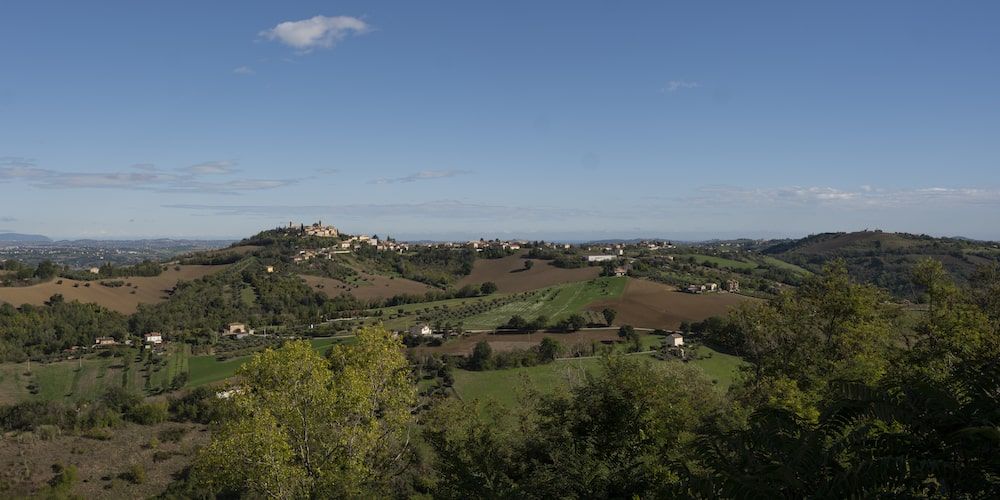
Nestled among the gentle, green hills of Marche, in the heart of Fermano, lies Falerone, a small gem that will enchant you with its tranquility, traditions, ancient roots, and stunning landscapes.
The territory surrounding this charming village is characterized by vineyards, olive groves, and cultivated fields, offering a unique panorama that changes color with the passing of the seasons.
As you walk along the trails that wind through the hills, you will discover magical places and a pastoral atmosphere from another time, filled with ancient agricultural traditions, the scents of the earth, and the sound of the wind rustling through the leaves of the trees.
This corner of Marche, away from mass tourism, offers authentic experiences, perfect for those seeking peace and wishing to rediscover the value of a daily life rooted in deep connections with the land.
Here, the peasant culture blends with the natural beauty of a landscape that seems to have come straight out of a postcard, ready to offer its best to anyone looking to immerse themselves in its simplicity and purity.
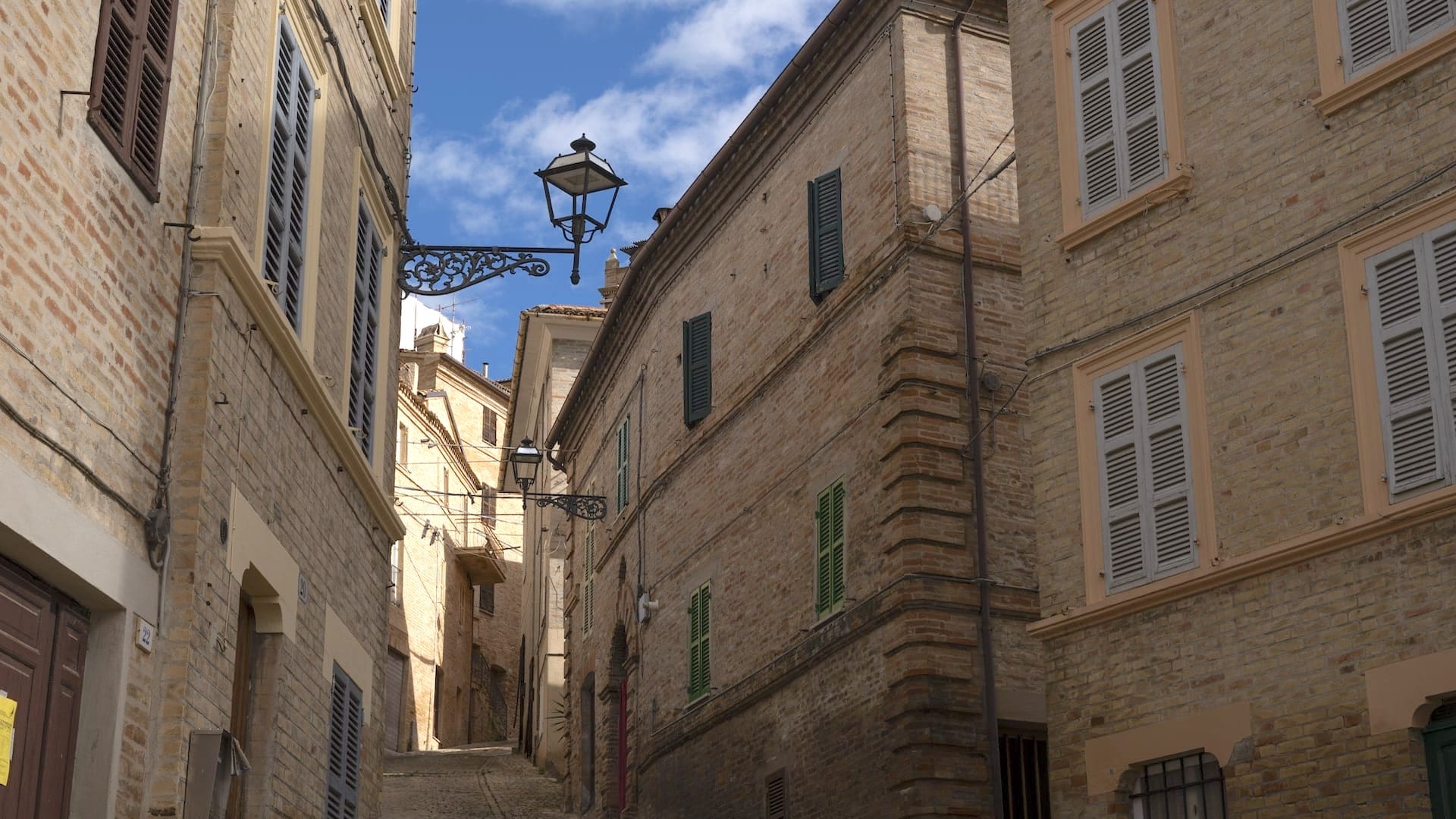
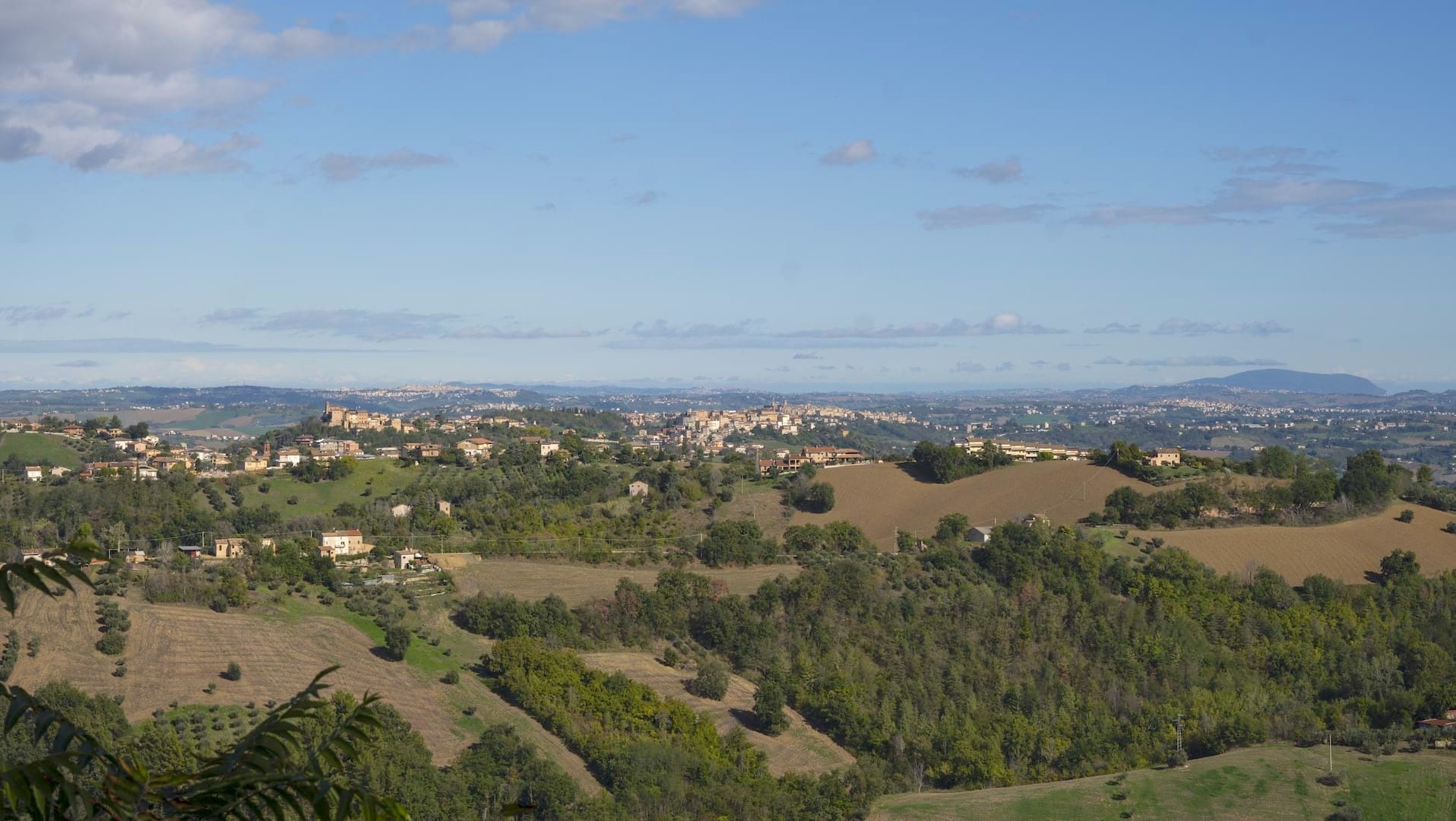
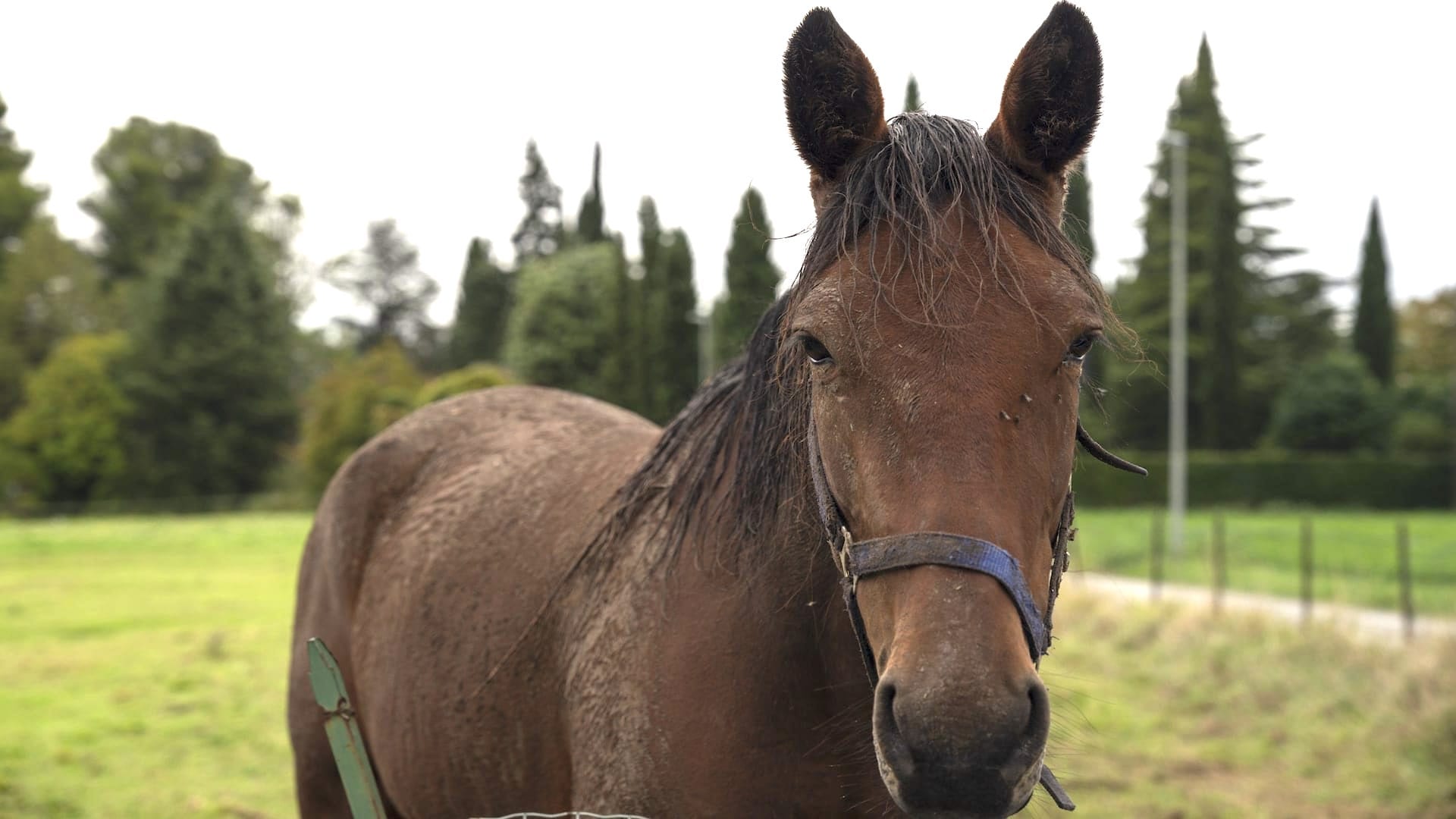

Falerone: the ancient charm of a Roman History
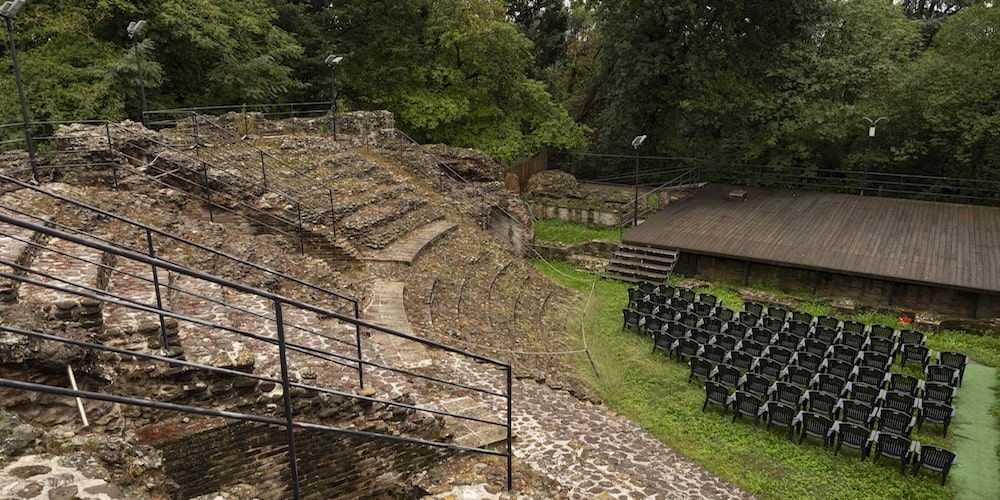
Even though today it appears as a peaceful village nestled in nature, Falerone holds a long and significant past that dates back to the Roman era. During the time of Augustus, specifically in 29 BC, the colony of Falerio Picenus was established in this area, a city that represented an important stronghold for Roman expansion in the Piceno region.
Located in a strategic position in the Tenna Valley, Falerio Picenus quickly flourished, becoming a vibrant center of economic and cultural exchanges. The settlers, primarily veterans of the Roman army, helped to create an organized urban structure, enriched by splendid buildings and remarkable infrastructure.
One of the most significant symbols of the city's prosperity was undoubtedly the Roman Theatre, which has survived to this day as one of the best-preserved testimonies of Roman civilization in the Marche region.
This ancient theater, built in the 1st century AD, could accommodate around 1,500 spectators. Today, with a capacity of 500 spectators, it's still used today for cultural events and performances, showcasing the greatness of Roman engineering that made it a lasting landmark.
Here, citizens could enjoy leisure moments with theatrical performances, but also public ceremonies and gatherings, confirming the central role of this site in the social life of Falerio.
Today, walking among the remains of the theater and other Roman buildings, you truly feel like you're stepping back in time to a prosperous and relevant city. The archaeological finds discovered in this area, including coins, statues, and ceramics, testify to the richness and importance of the colony.
In the following centuries, during the Middle Ages, Falerone was dominated by feudal lords who fortified the city and developed its current urban fabric. The Church of San Fortunato and the ancient walls are just a few elements that tell the story of the city's long transformation.
Although the present-day town does not possess the grandeur and significance of the ancient Roman colony, Falerone proudly preserves the splendid remnants of its past, integrating them harmoniously with the beauty of the surrounding Marche countryside.
Living Falerone among shows, festivals and traditional flavors
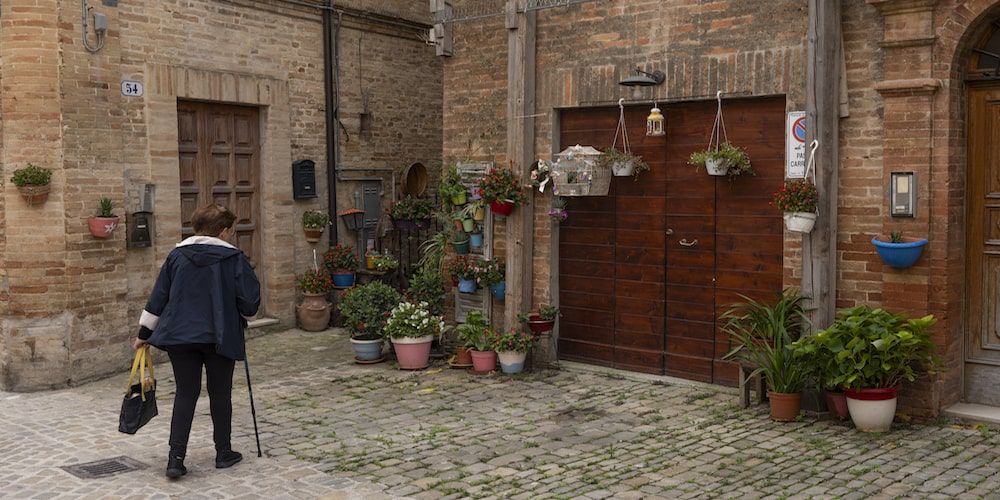
Throughout the year, Falerone comes alive with numerous cultural events that celebrate its rich past and rural life. Among the most notable events are the theatrical seasons at the charming Roman Theatre, which hosts performances of prose, dance, and concerts featuring nationally renowned artists.
During the summer, the theatre also welcomes historical reenactments, bringing to life the magnificence of ancient Rome through classic performances and celebrations of great cultural impact.
The local traditions of Falerone are deeply rooted in everyday life, with patronal festivals representing key moments for the entire community. Among these, the feast of San Fortunato, the patron saint, is a particularly cherished occasion: every June 1st, religious processions and moments of conviviality engage the whole town.
Enogastronomic festivals, such as those dedicated to the frittella (a typical sweet from the Marche region) and to olive ascolane, also attract visitors from all over the region, showcasing the local culinary tradition with dishes that tell the story of this beautiful territory.
Thanks to the combination of cultural performances, festivals, and events, Falerone offers a unique land rich in folklore, a true reference point for those who wish to experience an authentic and immersive journey into the culture and traditions of the Marche region.
What to visit in Falerone: discover the must-see places
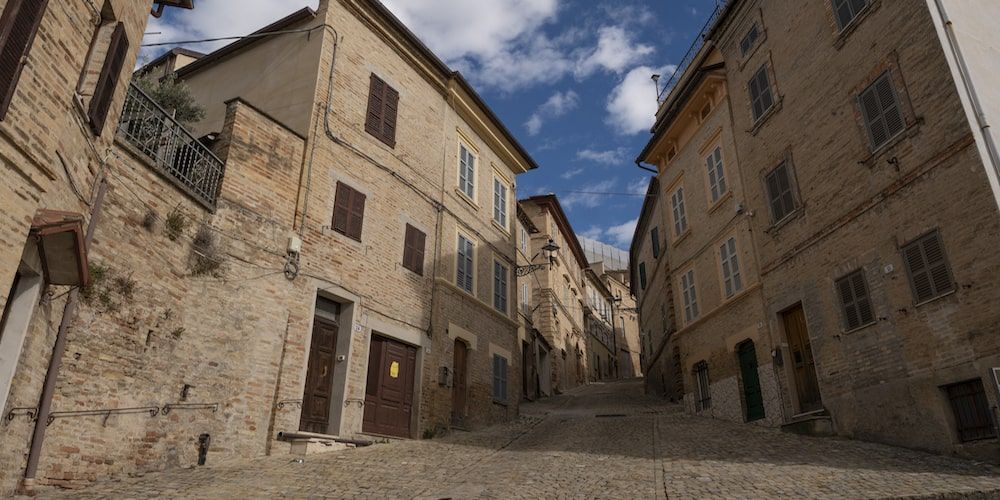
Falerone is not just a beautiful municipality in the province of Fermo, in the heart of the Marche region. It’s also a precious treasure trove of history, culture, and natural beauty. From the fascinating ruins of the Roman Theatre, witnesses to a glorious past, to the Falerio Picenus Archaeological Area, where you can immerse yourself in the millennia-old local history, the town offers a unique experience for every visitor.
In the historic center, you'll find an atmosphere reminiscent of an ancient medieval village, thanks in part to the picturesque Loggette dei Mercanti and the historic Church of San Fortunato.
Nature lovers will also be spoilt for choice, with parks and bucolic spots ideal for walks or relaxing breaks. And if you’re a foodie, get ready to indulge in local specialties: wine, oil, and bread, authentic expressions of the culinary tradition of the Marche region.
On this journey through Falerone, every corner invites you to discover, explore, and be enchanted!
Explore Falerone and the nearby villages with this tourAn ancient theatre between art and nature
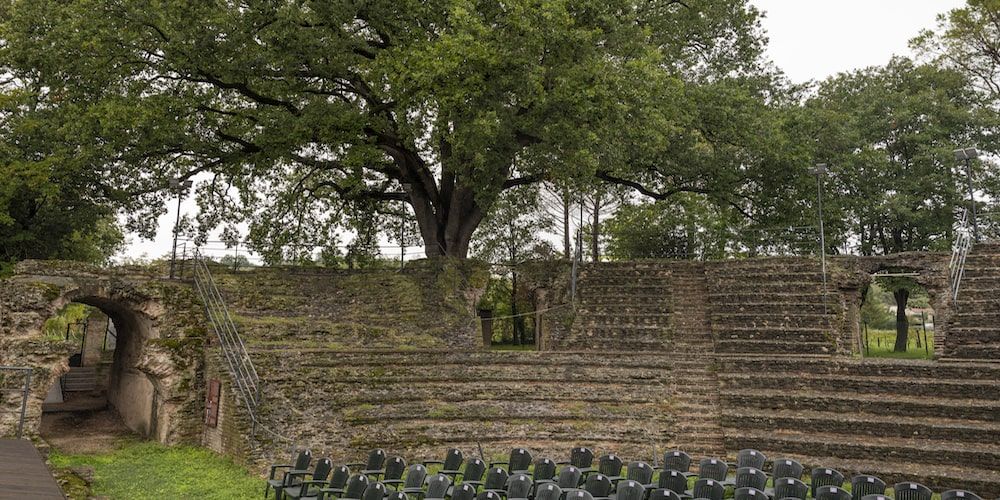
The Roman Theatre of Falerone, built in the 1st century BC during the Augustan era, stands as one of the most significant testimonies of the ancient city of Falerio Picenus. Located in the hamlet of Piane, just a few kilometers from the historic center, it's easily accessible by a short drive along Via Pozzo, or with a scenic 30-minute walk through the surrounding countryside.
Once able to accommodate 1,500 spectators, while its current capacity is 500, this magnificent example of Roman architecture was a gathering point for the community, hosting performances, cultural events, and political debates. Today, visitors can still admire the two levels of the cavea, the orchestra, the lateral entrances, the proscenium, and the remains of the stage, all elements that tell the vibrant story of life during that era.
One of the theater's highlights is the majestic Roverella, a monumental oak tree standing nearly 30 meters tall, also recorded by the forestry service, adding a touch of nature to the historical charm of this stunning location.
Visiting the Roman Theatre of Falerone offers a unique and immersive experience where history, art, and nature harmoniously blend together.
The archaeological secrets of Falerio Picenus
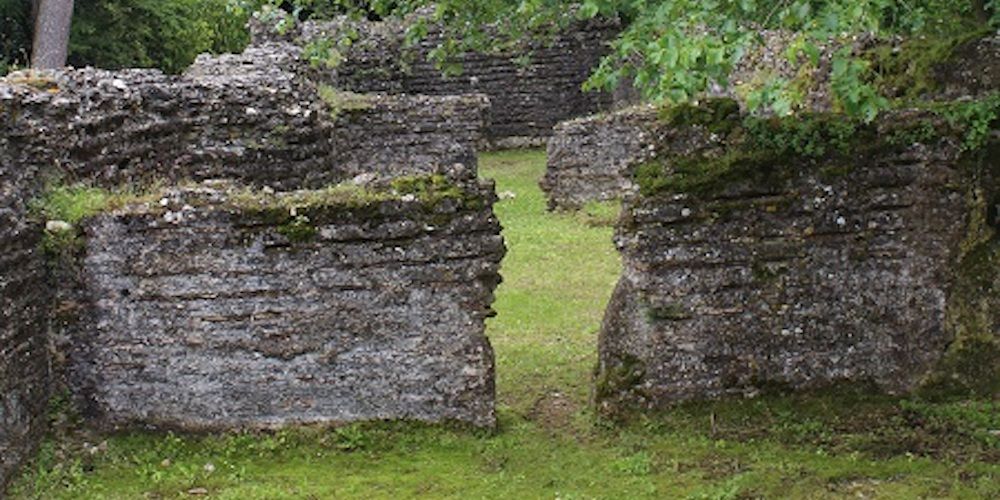
The Archaeological Park of Falerio Picenus, like the Roman Theatre, is located along the road connecting the historic center of Falerone to the hamlet of Piane.This area is a true gem of the past, as it hosts not only the theatre but also various other historical artifacts that bear witness to the flourishing life of the ancient Roman colony of Falerio Picenus in the Tenna Valley.
Among them, the ruins of the city’s amphitheater stand out, while along the ancient Roman cardo, now Via del Pozzo, you can also find the remains of the aqueduct, commonly called the "Queen’s Baths". This trapezoidal structure, divided into three tanks, was used as a reservoir to distribute water to the city.
Finally, nearby lies an ancient sarcophagus from the Imperial era, carved in marble or local stone, associated with wealthy patrons, as evidenced by the 25 glass balsamaria found in excellent condition.
In short, by visiting Falerio Picenus, you’ll step into the heart of an ancient civilization, rediscovering its atmosphere, history, and secrets.
The historic ruins of the Roman Amphitheater
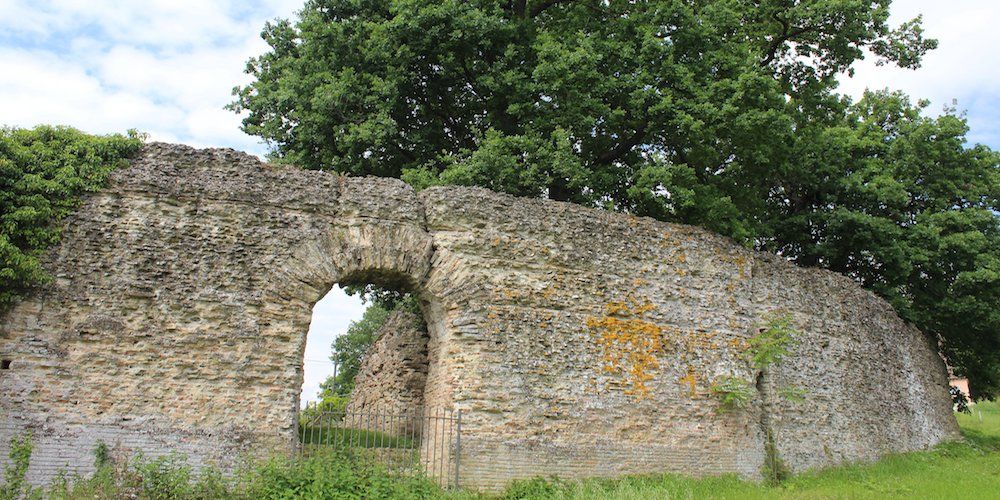
Along Via dell’Anfiteatro Romano, a small road that leads into the countryside at the northern border of the hamlet of Piane di Falerone, the historic ruins of the ancient amphitheater of Falerio Picenus rise dramatically.
Built in the second half of the 1st century AD, the amphitheater gradually reveals itself: only a few remnants of the perimeter wall emerge from the ground, but they are enough to suggest the grandeur of a structure that could host up to 5,000 people.
This site was dedicated to gladiatorial combat and the most popular spectacles, which typically took place from dawn until dusk in Roman civilization. The Roman amphitheater was, indeed, a vibrant space of life and entertainment.
It hosted thrilling events and served as an extraordinary example of engineering: often, secret rooms, animal cages, and service areas were concealed beneath the arena, showcasing architectural versatility like no other.
The atmosphere of a bygone era in the historic center of Falerone
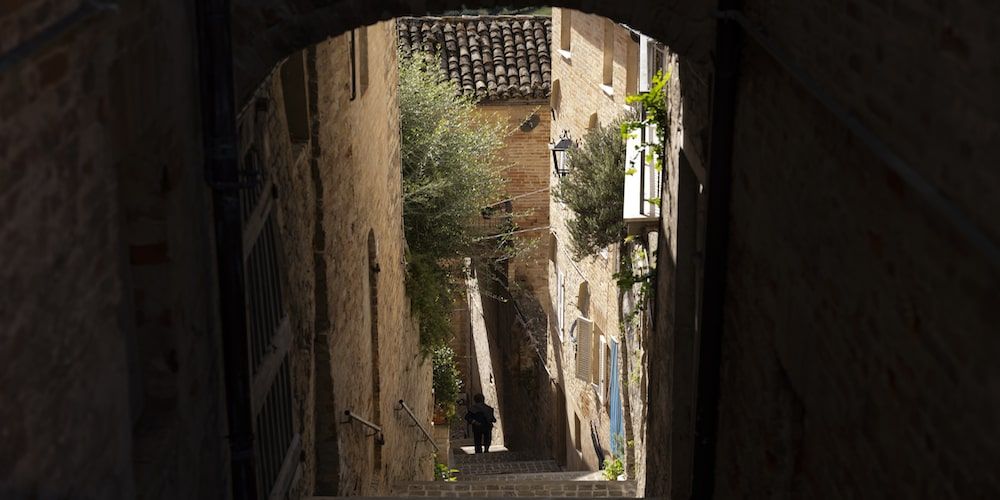
Within the walls of Falerone lies a path that winds through the old town, starting from Piazza della Concordia, home to the Town Hall, and leading to Piazza della Libertà along the picturesque Corso Garibaldi. This short walk will transport you into a timeless bubble, surrounded by ancient and charming buildings that evoke the village's past.
Among these, the House of San Paolino stands out for its allure, dating back to the 15th century, characterized by a magnificent portal and a facade adorned with lights framed by two lateral windows. It's an ideal spot to immerse yourself in the most authentic atmosphere of Falerone.
Once you reach Piazza della Libertà, you will find yourself in front of the Church of San Fortunato, while to your right, you can admire the Loggette dei Mercanti, two of the most beautiful and significant sites in the entire town.
Beato Pellegrino Theatre
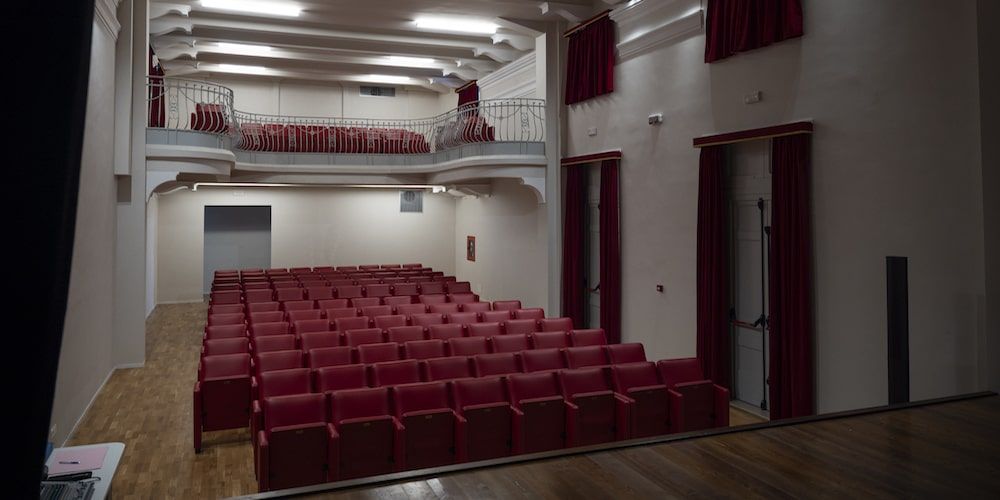
The Beato Pellegrino Theatre is located at the eastern entrance of the historic center of Falerone, just a few meters from the Town Hall and Piazza della Concordia. Inaugurated in 1926 for the Diocesan Eucharistic Conference, the building was originally conceived as a community space for all Faleronesi, with a theater on the ground floor overlooking a charming garden.
After World War II, the structure was converted into a cinema, becoming the first movie theater in the area and attracting audiences from surrounding towns. Over time, the theater played a central role in the cultural life of the village, transforming in a theatre in the 1980s to host local theater companies.
Recently renovated after years of decline, partly due to the damage caused by the 2016 earthquake, it now features charming neoclassical architecture and has once again come to life with events that bring the community together.
In the heart of the village: Piazza della Concordia
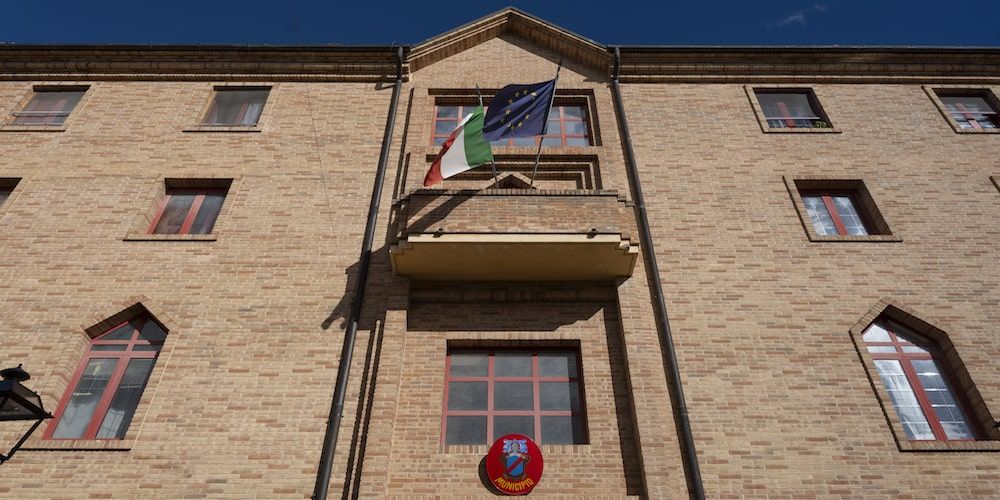
Small but definitely charming, Piazza della Concordia represents the heart of the historic center of Falerone.
Here stands the splendid building of the Municipality, and for this reason, the square is one of the landmarks for the social life of the village, while maintaining a calm and serene atmosphere, made even more special by the elegance of the historic buildings that surround us.
Among these, the structure of the Municipality stands out, with a staircase leading to the evocative elevated terrace, and the Church of San Giovanni Battista, characterized by an architecture featuring enchanting Gothic and Baroque elements.
The view over Corso Garibaldi and the nearby Torre di San Fortunato is stunning.
The charming Casa di San Paolino
Along the picturesque Corso Garibaldi, which crosses the historic center of Falerone and connects Piazza della Concordia with Piazza della Libertà, you can admire charming historical buildings with fascinating architecture.
One of these is the Casa di San Paolino, a magnificent 15th-century building, named after the fresco of Saint Paolino that once adorned its façade until the 19th century, serving as an important testament to the popular devotion of the past.
Don’t miss the stunning portal and the lights framed by the side windows—details that make this place truly magical, where history and culture intertwine in a beautiful narrative of community life.
Piazza della Libertà: the true soul of Falerone
Arriving from Piazza della Concordia, home to the Municipality, and walking along Corso Garibaldi, you reach the entrance to the picturesque Piazza della Libertà, which represents the most historical and authentic soul of Falerone.
In the center of the scene rises majestically the Church of San Fortunato, an imposing 13th-century building that immediately catches the eye thanks to the presence of the homonymous Tower of San Fortunato, a distinctive element of the square's panorama.
Opposite stands the enchanting portico known as Loggette dei Mercanti, where fairs and markets were once held with merchants and farmers negotiating prices.
Indeed, Piazza della Libertà has always been animated by cultural events involving the entire community. One such event was the Diocesan Conference held here in 1926, which saw thousands of faithful participating and became a significant moment for the entire religious life of the village.
Even today, during festivities, the square fills with colors and sounds, offering a unique experience that allows visitors to discover the true atmosphere of Falerone.
The treasures of Falerone: Loggette dei Mercanti
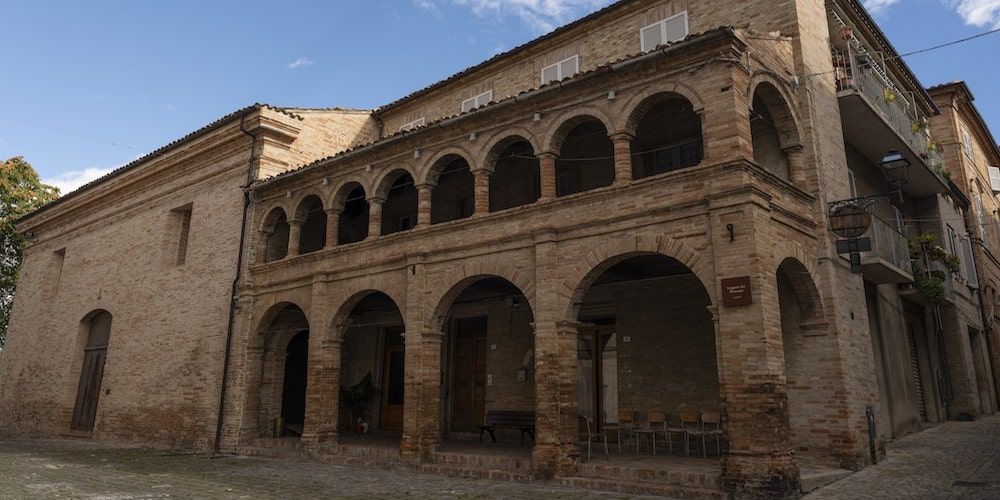
The Loggette dei Mercanti in Falerone is a charming 15th-century arcade overlooking Piazza della Libertà, the vibrant heart of the town.
These elegant Gothic arches once welcomed pilgrims, protecting them from bad weather and the scorching sun. They also hosted fairs and markets, where merchants and farmers would negotiate their goods beneath the portico. The Loggette was not only a shelter but also the center of the town's commercial and social life, where the bustling of people helped create a lively and dynamic atmosphere.
Today, this arcade remains a captivating and evocative place, where the ancient local history can still be felt, preserving the charm of a bygone era.
The Church of San Fortunato
The Church of San Fortunato, located directly opposite the Loggette dei Mercanti, is built in Baroque style and is distinguished by its interior, adorned with stuccoes and frescoes depicting sacred stories.
The façade, understated yet elegant, invites visitors to discover its rich artistic heritage. Inside, you can admire remarkable works, such as the 1479 painting of the Immaculate Conception by Vittore Crivelli, a masterpiece of exceptional value.
The church, with its simple yet imposing and captivating façade, offers an atmosphere of relax and contemplation, making it a key landmark for the spirituality and cultural identity of Falerone.
The Tower of San Fortunato

The Tower of San Fortunato is a defining feature of Piazza della Libertà, in the historic center of Falerone.
Located next to the church bearing the same name, the tower blends seamlessly with the religious structure, creating an architectural ensemble that serves as a key landmark for the local community.
The Tower of San Fortunato is not only a symbol of identity but also a significant historical testimony. In the past, its role extended beyond aesthetics: it was used to signal public events, warn of emergencies, and mark the daily rhythms of village life with the sound of its bells.
These functions make it a living piece of Falerone's history, directly connecting the present with the traditions and pace of medieval life. Even today, the tower retains all its charm, standing as an ideal place to understand the most authentic soul of the region.
The Pompilio Bonvicini Archaeological Museum
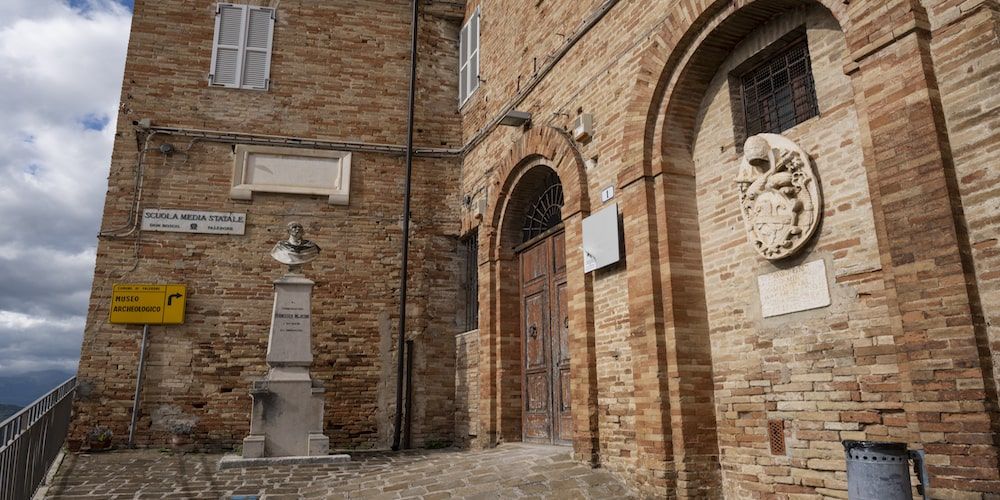
In the charming historic center of Falerone, particularly in the picturesque area of Piazza della Libertà, you can discover traces of the town's Roman past at the Pompilio Bonvicini Archaeological Museum.
This museum is a true treasure trove, perfect for appreciating the numerous artifacts from the ancient Roman colony of Falerio Picenus and the excavations carried out over the centuries.
Inside the museum, you can admire a wide collection of items that tell the story of the daily life of the town. Coins, pottery, weapons, and statues make the museum not just an exhibition of artifacts, but a true bridge between the past and the present, offering a fascinating perspective on the peoples who inhabited this land, and encouraging reflection on the importance of the historical and archaeological heritage that still influences Falerone's identity today.
The museum is named after Pompilio Bonvicini, a renowned archaeologist and historian, whose efforts have preserved and enhanced the history of Falerone and the Tenna Valley.
His work made it possible to preserve a significant part of this heritage, making the museum a must-visit stop for a deeper understanding of the historical and cultural significance of Falerio Picenus.
The medieval walls of Falerone
Imposing testimony of history and medieval defensive engineering, the walls of Falerone envelop the ancient heart of the village. These solid fortifications once protected the town from external attacks and represented not only a physical boundary but also a cultural one.
The walls, while austere in their defensive function, blend perfectly with the surrounding landscape, offering picturesque glimpses of the Marche hills. Walking along these ancient structures, one can almost imagine what life in the village was like during the Middle Ages, in an atmosphere that mixes historical charm with natural beauty.
This is why exploring the medieval walls of Falerone means not only taking a dive into the past but also immersing oneself in the tranquility and timeless allure of this splendid corner of the Marche region.
The greenery and nature of Parco San Paolino
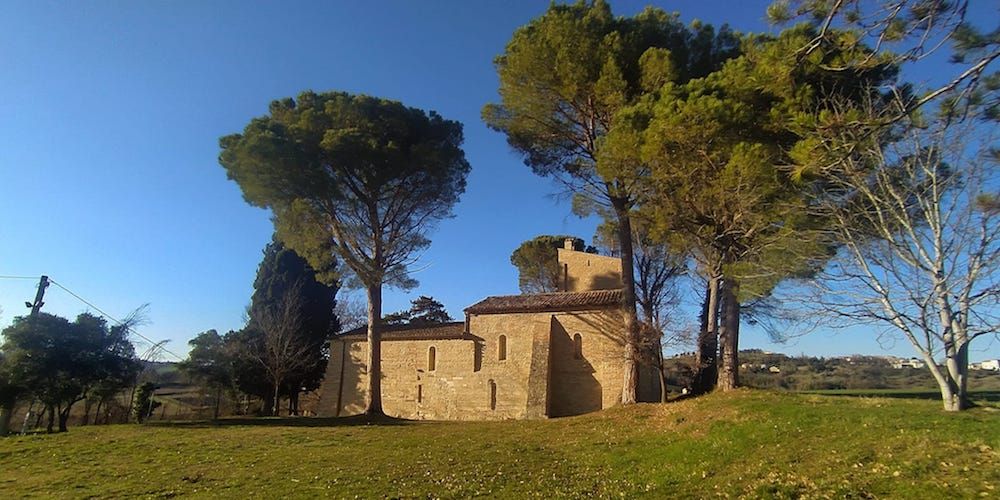
Parco San Paolino, Facebook page
A splendid, very peaceful, and well-maintained park, ideal for immersing yourself in the greenery of nature and the rural atmosphere of the hills of Marche.
Parco San Paolino, located in the homonymous district, just a few kilometers from the historic center of Falerone, is a beloved place not only by tourists but also by the local community. In this tranquil oasis, you can stroll along shaded paths, enjoy a picnic with your family, or simply let yourself be enveloped by the beauty of the surrounding nature.
Families gather to spend time together, while sports enthusiasts take advantage of the areas dedicated to physical activity. The park also hosts cultural events and activities that enliven the area, making it a landmark for all those who wish to discover the essence of Falerone.
Inside the park, you will also find the charming Church of San Paolino, dating back to the 7th century, an enchanting example of Lombard architecture.
The church of San Paolino and the Lombard period
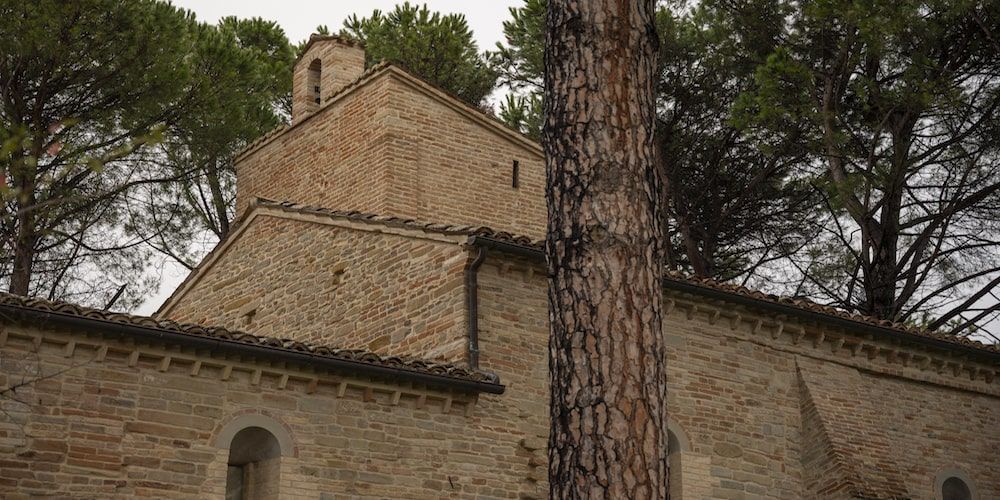
The Church of San Paolino is one of the main religious buildings in Falerone and has a long history connected to the local community. Its structure and historical significance make it an important stop for those visiting the municipality. The church is located in Contrada San Paolino, south of the historic center and just outside the hamlet of Piane.
San Paolino dates back to the 7th century AD and was originally the cathedral of the town. Today, it stands as a fascinating example of Lombard architecture, evident in the presence of the tombstone of Gastaldo Volveto, a historical figure who lived during the reign of Lombard King Desiderius.
Characterized by an elevated location and adorned with ancient sculptures and reliefs, the church also features an interior rich in ancient Lombard symbols, such as interlaced designs, Solomon's knots, and five-pointed stars, which contribute to creating an atmosphere of deep spirituality and historical significance.
Piazza Giovanni Paolo II in Piane di Falerone
A welcoming space, perfect for socializing or simply soaking in the atmosphere of a village nestled in the Marche countryside.
Piazza Giovanni Paolo II, located at the heart of the Piane di Falerone hamlet, is a modern public space that seamlessly combines functionality and warmth. Flanked by the elegant silhouette of the Church of Saints Giovanni and Nicolò, the square serves as a key landmark for both the local community and visitors, hosting a variety of events, festivals, and cultural celebrations.
Its spacious, well-organized paved area is suited for numerous activities, making it a dynamic and versatile meeting point, while the surrounding green spaces offer the perfect setting for a relaxing break.
The typical products of Falerone

Comune di Falerone, website
A true oasis of typical Marchigiano flavors, Falerone offers a variety of local products that reflect the rich agricultural tradition of the area.
Among the local wines, the Rosso Piceno stands out, a full-bodied and versatile wine ideal for pairing with meat dishes and aged cheeses. Alongside the Piceno, try the Falerio, a fresh white wine made from Trebbiano, Passerina, and Pecorino grapes, which represents a connection to the ancient Falerio Picenus.
In addition to wine, extra virgin olive oil is a fundamental ingredient that enhances the typical dishes of the territory. It’s the 'Piantone di Falerone' oil, obtained from locally cultivated olives, which stands out for its delicate and fruity flavor. This oil has also received the Denominazione Comunale (De.Co., which stands for Municipal Denomination), a recognition that emphasizes the local origin and unique characteristics of the product.
Don’t forget to sample the baked goods, such as homemade bread and focaccia, which are a staple at meals during local festivals.
Finally, among the desserts, discover the fascinating history of "Lu Serpe": dating back to the late 17th century and made for Christmas, this snake-shaped sweet is prepared according to a centuries-old recipe from the Clarisse nuns of Falerone. It symbolizes renewal and the cyclical nature of life, and is often given as a token of goodwill during the holidays.
Its preparation is long and complex, involving a recipe that was originally kept secret, and includes a dough made from flour and almonds, decorated with chocolate and confetti. These elements contribute to making it not only a delicious product but also a symbol of conviviality and spirituality.
How to reach Falerone, an authentic village nestled among the Marche hills
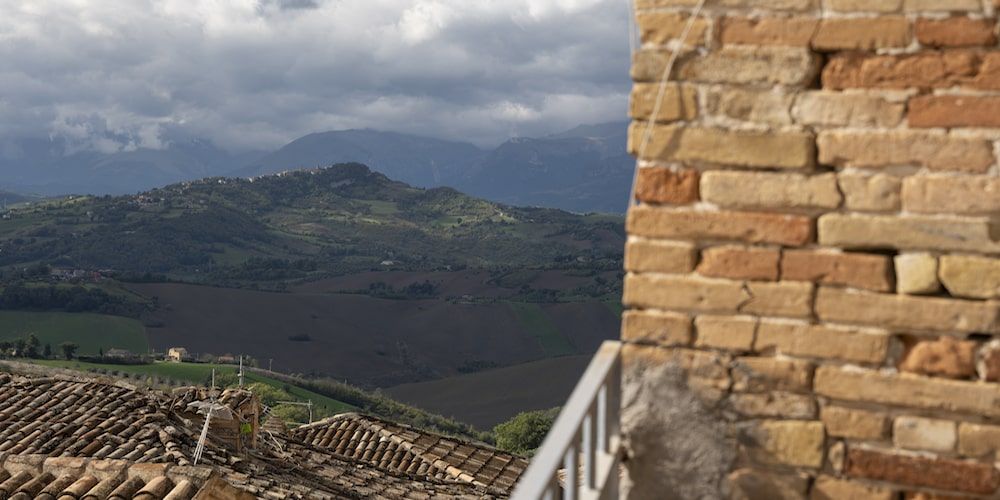
Reaching Falerone is a journey that allows you to explore an authentic and special territory. The most scenic way to get there is by car: starting from Ancona, the capital of the Marche, take the A14 motorway heading south and exit at Porto Sant'Elpidio.
The route winds through provincial roads, crossing rural landscapes rich with vineyards, olive groves, and small villages, offering a road trip experience where each turn reveals new perspectives and memorable views.
You can also reach Falerone by public transport, taking a train to Porto San Giorgio station, located along the Adriatic coast, and then continuing by bus (Porto San Giorgio-Fermo-Amandola Piandicontro line) to arrive at Piane di Falerone in about an hour. From there, the historic center of the village is approximately 10 minutes away, accessible via local services.
Once you arrive, you’ll discover a corner of Italy that remains untouched, where every step reveals the beauty of a past that feels more alive than ever, ready to transport you into the peace of the Marche hills and embrace you in a timeless hug.






